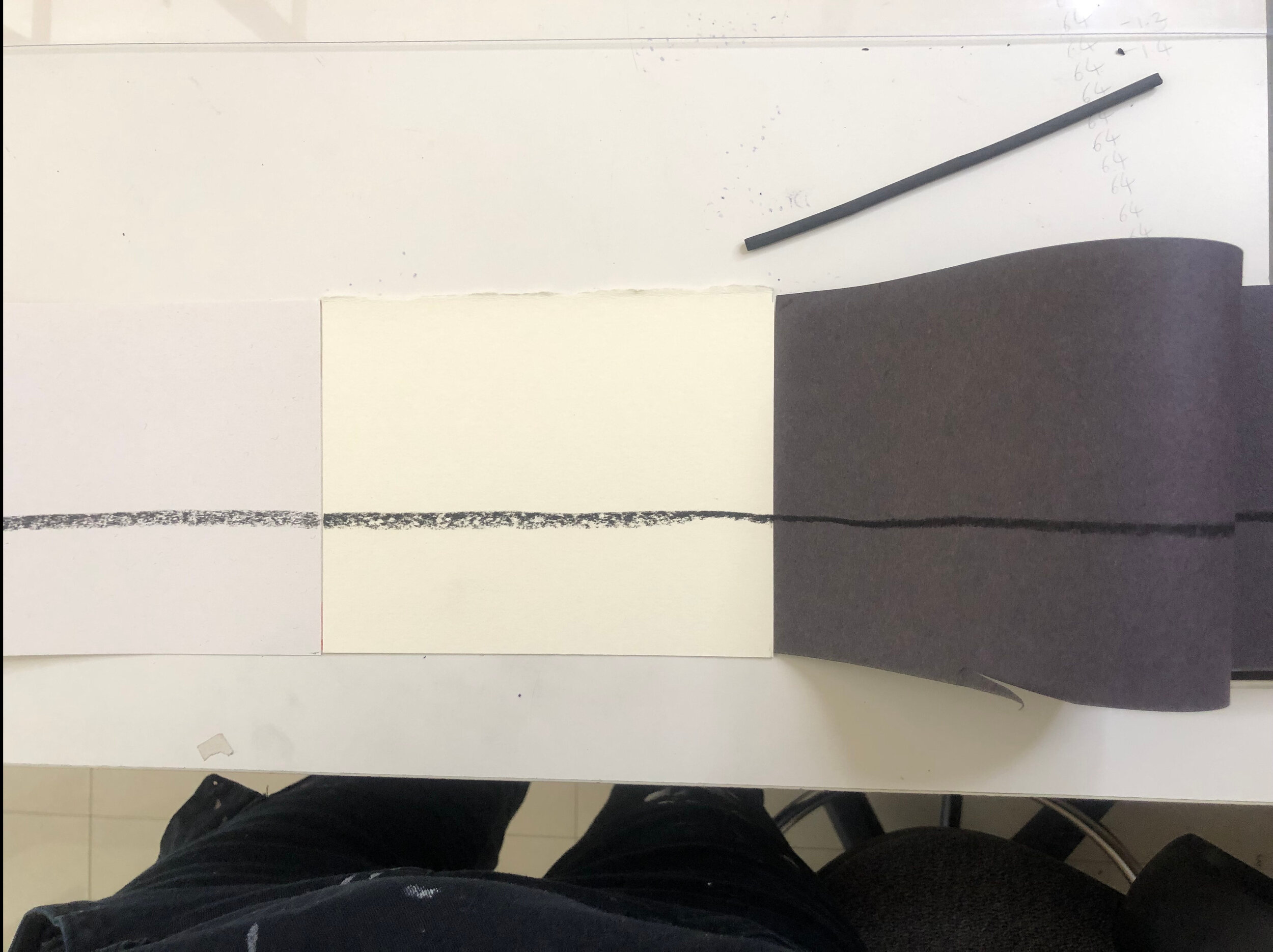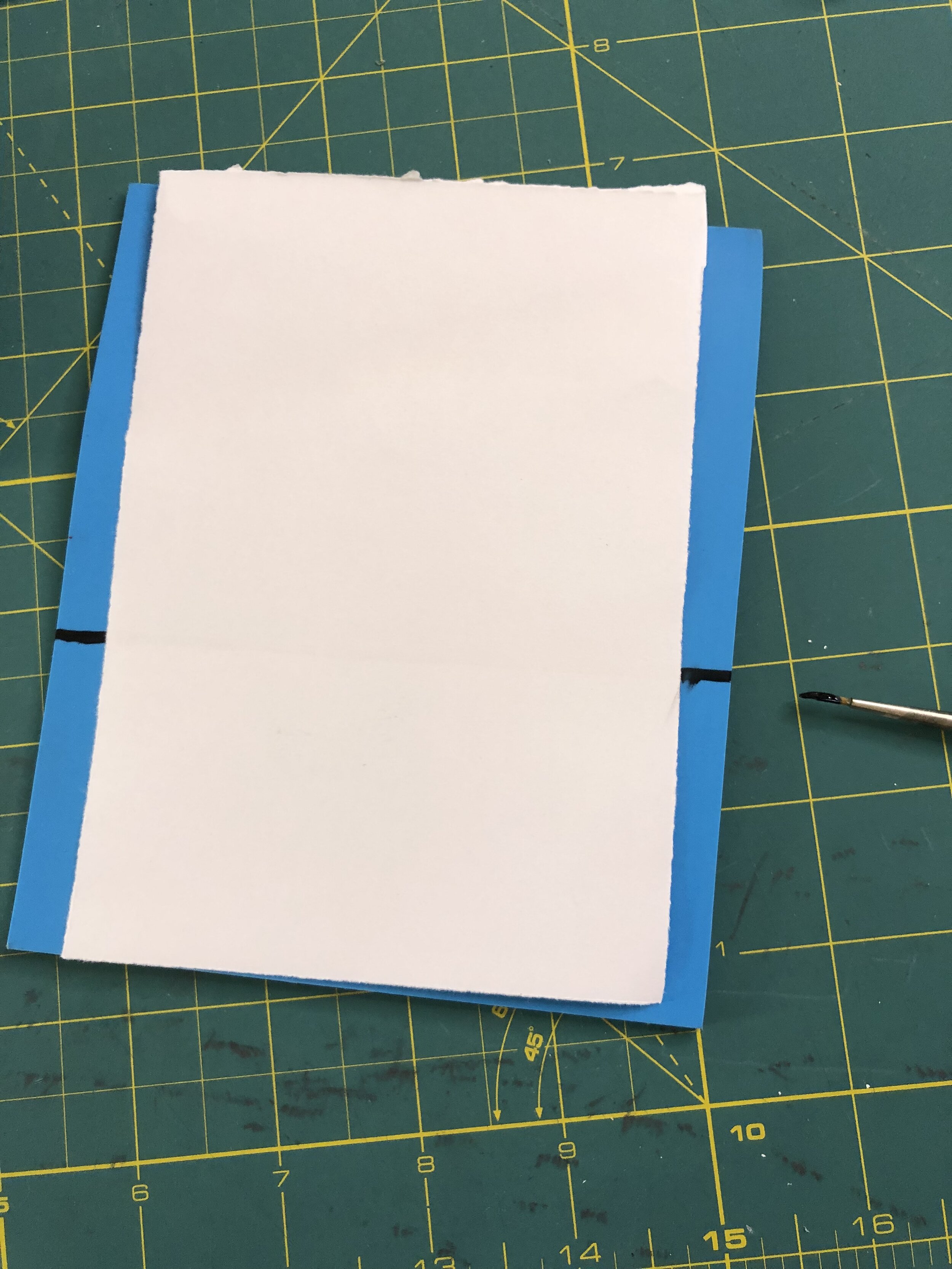Making day: group 1 - KF
Printing and book-making
I made some books up before the making day, I used the time on the day to work on the feedback from Catherine Baker (the tutorial was the day before) and work with some simple lines, collisions of materials and explore some mark-making and printing.
-

small leporello -

-

-

graphite frottage line -

-

mixed paper book -

charcoal continuous line -

charcoal was not lifted -

these pages stuck together -

i filled the line but it felt untrue -

-

I erased all of the line to deny the lie
-

book making from found materials -

-

book of found papers -

drawing a line on lino with a brush -

printing the line -

outcome of drawn line on lino -

I cut a block instead and used it as a stamp to get a more consistent line
-

inked up perspex for mono printing line -

the texture of the ink -

preparing to print -

prints drying -

prints drying
Notes from the table (literally):
Use the frottage technique to draw a line in an existing book - encounters with surface
Draw a line through the book with charcoal - that line is a lie (it was broken by pages sticking together) - erase the lie, process of erasing is evident as it alters the book again, abrasive to the surface, leaving a trace of the original line on the surface and altering the marks that were there before the line.
Not a book - an object that acts like a book, but how is it read? How is it viewed? The line is like a horizon but if it is hung it becomes a seam? Does a seam have to bring two things together? What does that mean for the seams of the book pages?
Truth - erasing - trace -
Constancy of print block line, it is fractured but the fractures are on the seams of the book, is it still a line if it comes in multiple parts?
Truth of line - frottage - felt forced - looking for interesting surfaces - how can one create a gathered line that speaks of truth? What is the truth it is speaking? Is it fo time? What time? Does it matter?






















